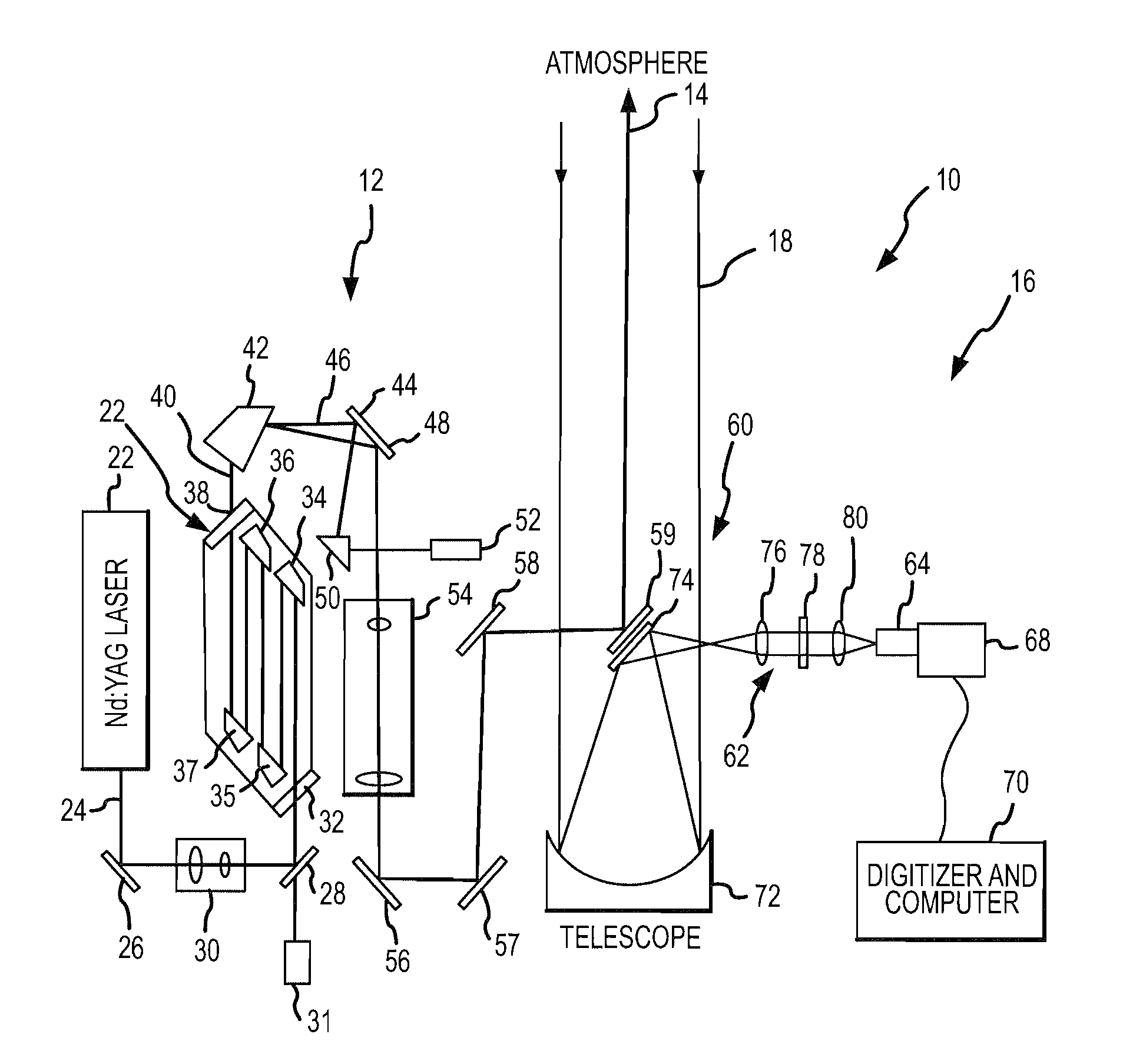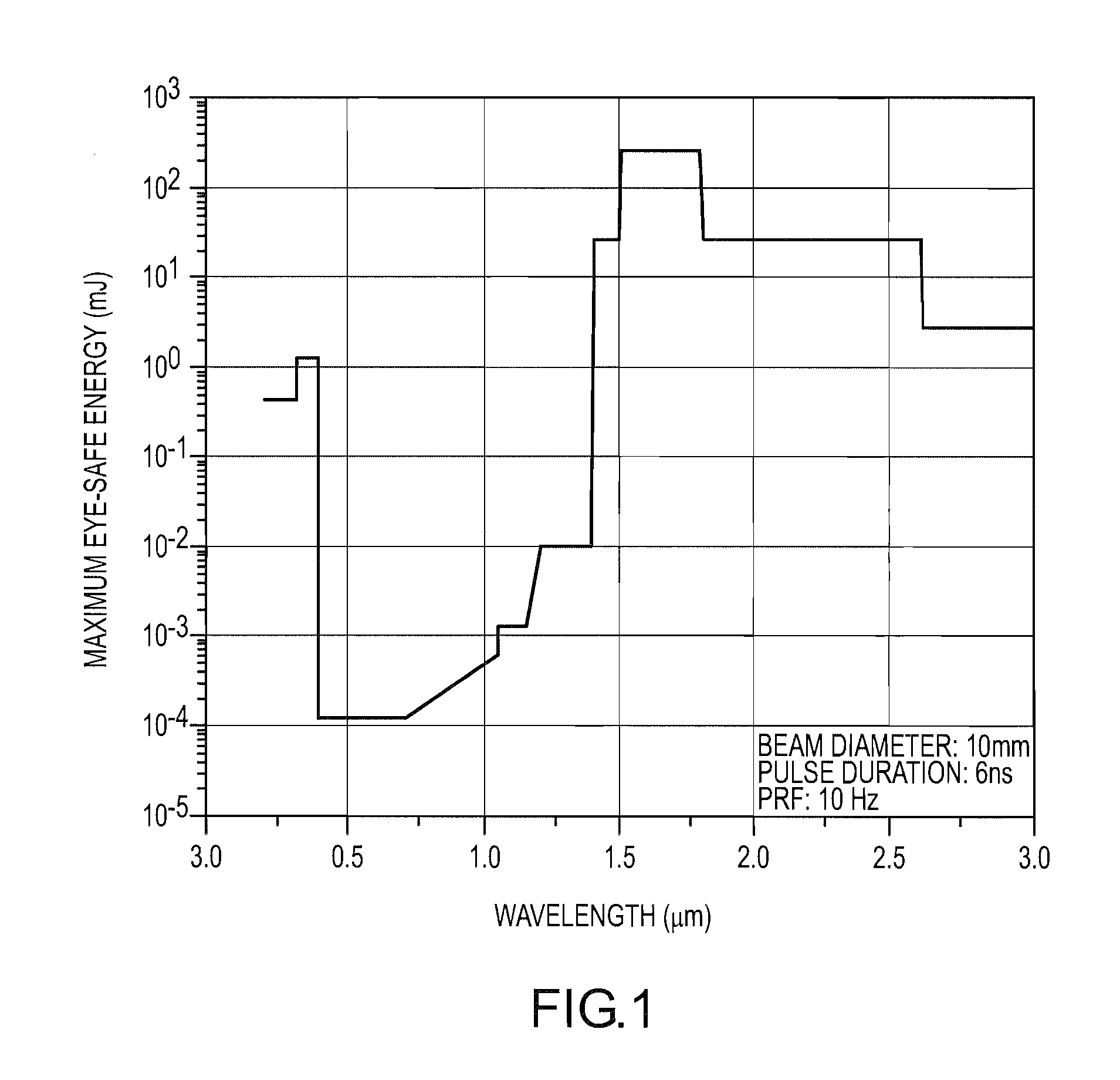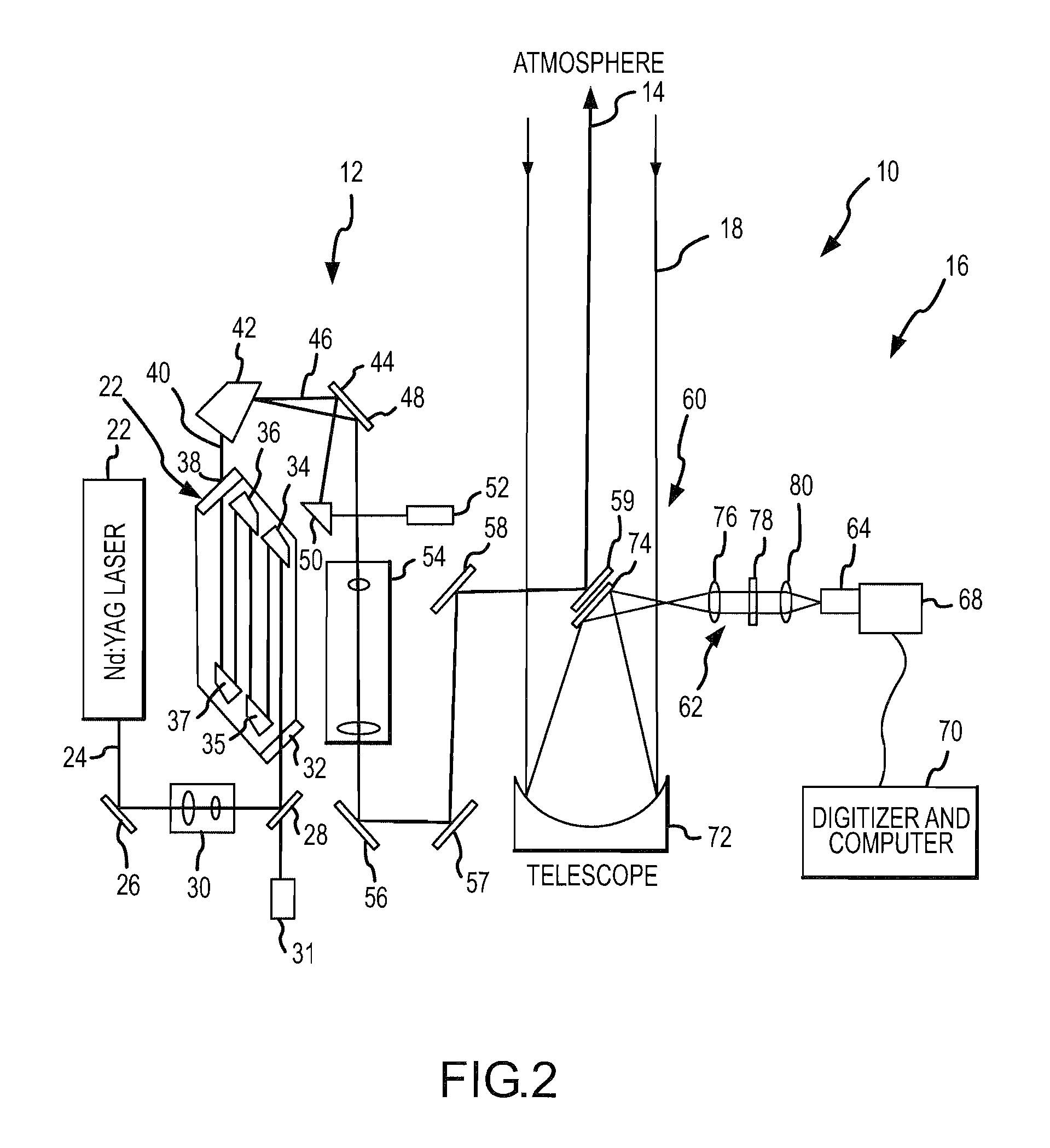High pulse-energy, eye-safe lidar system
- Summary
- Abstract
- Description
- Claims
- Application Information
AI Technical Summary
Benefits of technology
Problems solved by technology
Method used
Image
Examples
Embodiment Construction
[0039]In the following description, the invention is set forth in the context of a high pulse energy, and Raman shifted Eye-safe Aerosol Lidar (REAL™) system. Indeed, the invention has a number of benefits and provides useful results in this regard. However, it will be appreciated that various aspects of the present invention are not limited to such lidar applications. Accordingly, the following description should be understood as exemplifying the invention and not by way of limitation.
[0040]Elastic backscatter lidars are useful tools for atmospheric researchers and potentially for commercial users because they are capable of showing the aerosol distribution in the atmosphere in both space and time. Although the backscatter return from these systems is typically uncalibrated, the images they provide are extremely valuable for identification of boundary layer depth, elevated aerosol layers, wave activity, and sources of pollution. Unfortunately, currently useful atmospheric aerosol l...
PUM
 Login to View More
Login to View More Abstract
Description
Claims
Application Information
 Login to View More
Login to View More - R&D
- Intellectual Property
- Life Sciences
- Materials
- Tech Scout
- Unparalleled Data Quality
- Higher Quality Content
- 60% Fewer Hallucinations
Browse by: Latest US Patents, China's latest patents, Technical Efficacy Thesaurus, Application Domain, Technology Topic, Popular Technical Reports.
© 2025 PatSnap. All rights reserved.Legal|Privacy policy|Modern Slavery Act Transparency Statement|Sitemap|About US| Contact US: help@patsnap.com



